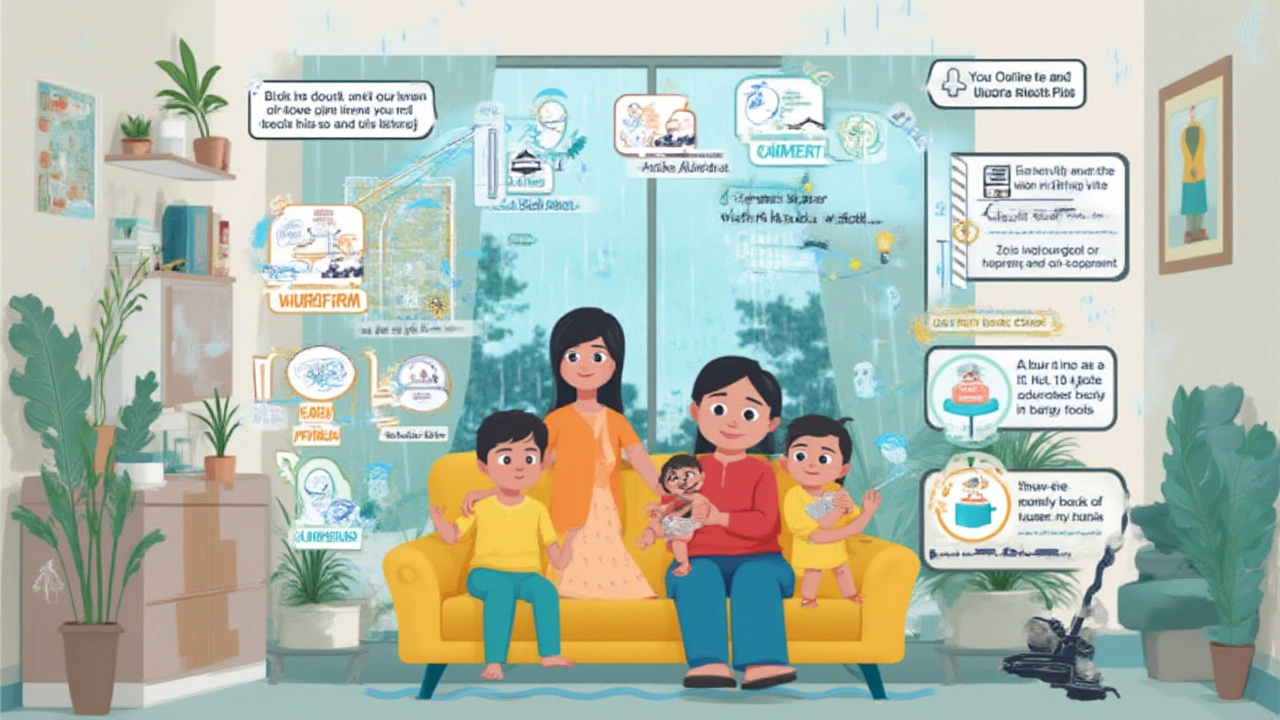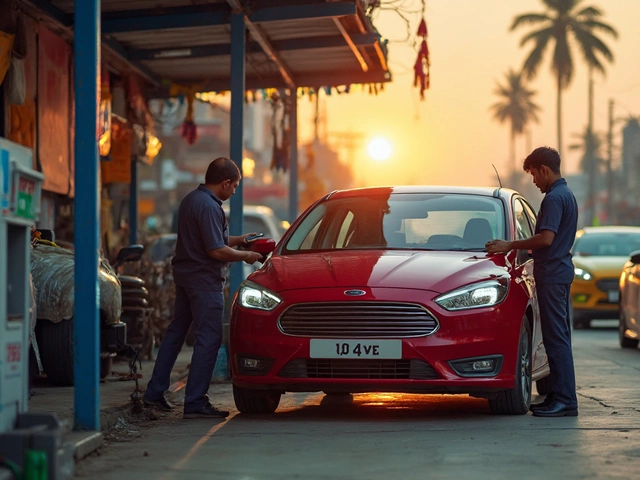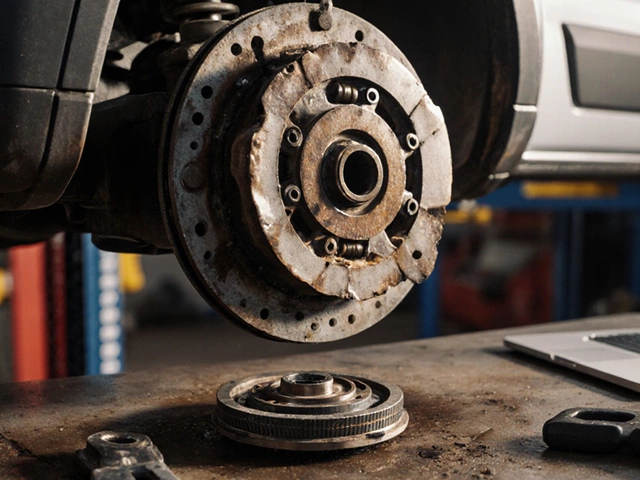
Ever had your windshield turn into a smeared mess in the middle of a downpour? Chances are, you reached for your wiper switch only to discover the blades were more decorative than useful. Picking the right wiper blades isn’t rocket science, but the market is crammed with choices—some that promise to survive an apocalypse, others that can barely outlast a cup of coffee. Making the wrong pick won’t just annoy you; it could genuinely mess with your safety in the worst weather.
What Makes Wiper Blades Different—and Why Should You Care?
You’d think a rubber strip on a metal arm would be simple enough, right? Dig a little deeper, though, and you’ll find wiper blades can be surprisingly technical. For starters, you’ve got three main types: traditional frame-style (sometimes called bracket blades), beam blades, and hybrid blades. Each brings something a bit different to the table.
Traditional frame-style blades are the old-school heroes—easy to spot by their metal framework and visible moving joints. They’re cheap and reliable, but they can get clogged with ice or gunk, especially in wintry climates. Beam blades, on the other hand, use a one-piece design—no visible joints—which gives them more consistent pressure across the windshield. That means less streaking and better performance in the rain or snow. Beam blades also hug curved windshields like a glove, and you’ll usually see these on newer cars fresh from the dealership.
Then there’s the hybrid blade. This one borrows the body style of a frame blade but wraps the whole thing in a shell, so you get the best of both worlds—strength plus protection from debris. They’re smoother, quieter, and a favorite among people who want that OEM (original equipment manufacturer) look, especially on imported models. According to AAA, “Visibility is a top factor in accident prevention, and the right wiper blade can significantly reduce smearing and missed spots.”
Beyond the broad types, you also have to consider rubber technology. All blades use either natural rubber, synthetic rubber, or a coated compound. Natural rubber is soft but doesn’t last as long; synthetics survive harsher conditions and UV rays much better. Premium blades like Bosch ICON or Rain-X Latitude use beam designs with refined rubber compounds and even water-repelling treatments. That stuff actually beads water off your glass, so rain just slides away. Not all the chemistry is hype—if you live somewhere with hot summers and a lot of traffic dust, a treated blade can mean not having to swap blades every few months.
Fit matters, too. You’d be surprised how many people just grab whatever’s on sale, only to find their blades don’t even reach the windshield’s edge or slap around awkwardly. Automakers have their quirks. For example, some Honda models use two totally different blade sizes, one for the driver and one for the passenger, and if you mix them up, you’ll get weird skipping or untreated patches. Always, and I mean always, check the measurements in your car’s manual or use an online sizing lookup—most auto parts retailers have databases that let you punch in your make, model, and year for instant answers.
If you want to go full pro: measure the old blades yourself with a tape measure to the nearest half inch. If you’re in doubt, a quick search by your VIN (Vehicle Identification Number) on the manufacturer site gets you precise info. Some brands—think Valeo or Michelin—include universal adapters, but others might need model-specific connectors. Don’t just wing it. Installing blades with the wrong attachment style is like forcing a key into the wrong lock—you’ll damage the wiper arm or the blade itself.

How to Choose the Best Wiper Blades for Your Car and Driving Style
So you know the types, but how do you narrow it down? Start with your climate and habits. Live somewhere that gets buried in snow? Don’t even consider bare-frame blades—go straight for beam or hybrid, which shed ice and chunks much better. Dealing with scorching sun and dust, like in Arizona or Nevada? Synthetic rubber and UV-resistant blades last longer. If you’re in the city dealing with grit, a silicone-coated blade can make daily cleanups a breeze.
Don’t underestimate the difference quality makes. Cheap blades tend to split, fray, and start skipping faster, putting streaks right in your line of sight. Higher-end blades might look pricey (anywhere from $20 to $30 a pop), but if you’ve ever driven through a sudden hailstorm on the interstate, you know those extra bucks can be worth their weight in gold. Consumer Reports ran a test in 2023 where Bosch ICON blades lasted nearly double the mileage of off-brand generics without going noisy or leaving streaks. It’s like comparing bargain basement sneakers to a good pair that keeps you from slipping on tile floors. Which would you trust for your only way home?
Brands do matter—at least, the top ones. Shop for wipers and you’ll notice names like Bosch, Rain-X, Michelin, Trico, and Valeo pop up over and over. These aren’t just clever marketing. They’ve put years into making different blade types and adapters, so you can always find something that mates snugly with your car’s wiper arm. There are also specialty blades out there for trucks and SUVs—longer, thicker, and even built for heavy-duty splashing from off-road work. Take time to check for vehicle-specific reviews online; it’s not unheard-of for certain blades to work better (or, weirdly, worse) on some windshield shapes. A Ford F-150’s massive sweep is a whole different animal than a Fiat 500 city runabout.
If you’re after an easy swap with no fiddling, look for “universal fit” blades, but don’t expect them to have the tightest attachment. Most major makers offer step-by-step video guides on YouTube. Tip: Always swap out both blades at once. Otherwise, the older one will drag dirt or chatter while the fresher one just smooths it over, leaving half your view streaked. If you’ve got a rear wiper on your hatchback or SUV, don’t forget it—it takes just as much of a beating as the front and gets even less attention.
Here’s a quick checklist when picking your next blades:
- Measure both your driver and passenger blade lengths, as they can differ.
- Check your wiper arm style (hook, pin, or bayonet) for compatibility.
- Prioritize beam or hybrid for extreme climates; classic frame for fair-weather simplicity.
- Choose synthetic rubber or silicone for maximum life and performance.
- Look up real-world reviews—YouTube and auto forums often show specific cars’ results.
- Don’t mix different types or brands unless you’re forced to. Consistency means fewer missed patches.
One little-known fact: automakers sometimes switch wiper sizes without warning during a single model year. That’s why even brand new cars can roll off the lot with two different lengths than last year’s version. Don’t trust only the box—peek at your car’s manual or use an online tool from a big-name parts retailer.
Let’s not ignore rear blades. Many folks forget about them, but in rain and on muddy back roads, clear rear glass makes parking and reversing much safer. Rear wipers are usually shorter, sometimes stubby little things, and not every brand carries replacements for every model. If your car is even a bit unusual, order a set online ahead of the rainy season so you’re never caught out.
Looking to get the most life from your new blades? Do a quick clean of your windshield every week with a paper towel and glass cleaner. Wipe the blades themselves with a damp rag—gets off all that muddy grit and tree sap before it builds up. When parking for days in summer, flip your wipers up off the glass to stop the blade rubber from fusing to a baking windshield. “Most people ignore their wipers until a storm hits, but just a minute’s attention every month can double their lifespan,” says Tim Sutherland, auto tech editor at Car and Driver.
“Dirty or worn wiper blades can reduce driving visibility as much as a heavy fog. It’s literally about seeing and being seen,”Sutherland adds. Hard to argue with that logic.

Making Your Final Pick—and Common Mistakes to Avoid
Ready to buy? Pause before tossing just any pair into your cart. The market’s crowded with gimmicks, so avoid falling for flashy packaging or wild claims like “guaranteed for five years.” Ask yourself: have you read user reviews from people who own your car model? Did you actually measure your existing blades? If yes, then you’re halfway done.
One big rookie mistake: using the wrong length. If the blade is too short, you’ll miss part of the glass. Too long, and it could hit the windshield pillar, making that annoying slapping sound—and, worse, wearing the edge down fast. Some folks even mix and match different lengths because a store was out of stock. Always get the blade that matches your car’s specs—both for aesthetic and practical reasons. Windshield engineering isn’t random; it’s calibrated for optimum sweep.
Another classic slip-up? Not swapping out the adapters when needed. European cars sometimes need a different attachment than most American or Japanese models, even though the blade itself looks identical. And installing a blade upside down (trust me, it does happen) won’t just look dumb—it’ll smear water and possibly scratch your glass. If you’re stuck, every major wiper brand has install videos or diagrams online. Watch once, do it right, and you’ll only need about two minutes per side.
If you wash your car at home, don’t forget that some waxes or detergents leave a film over the glass, which makes fresh wiper blades scream or skip. Go over the glass with a dedicated windshield cleaner, then test your wipers with the washer fluid. If they squeak or chatter right away, check for debris on the rubber edge or even on the glass. Sometimes, a dirty windshield is the only thing standing between buttery-smooth blades and nails-on-chalkboard scraping.
Want to go the extra mile? Don’t just swap out wiper blades once a year. If you drive in snow, salt, or heavy rain all the time, aim for every six months, especially ahead of the rainy or snowy season where you live. Sure, some blades claim “all-season” life, but real-world grit, bug guts, and tree sap eat through even the best ones over time. Always keep a spare set in your trunk, just like you would with jumper cables or a spare tire. You never know when a blade might rip or fly off—yes, it happens, especially with earlier aftermarket models or when going through aggressive automatic car washes.
So, next time your windshield looks more like a watercolor than clear glass, you’ll know how to fix it properly. Choosing the right wiper blades isn’t just about specs—it’s about knowing your car, your climate, and your own pet peeves about visibility. The good thing? There are plenty of options out there. And if you stick to what fits and what works (not what the flashiest box says), you’ll never be left squinting through a downpour again. Stay safe out there—and may your wipers always run smooth and silent.



